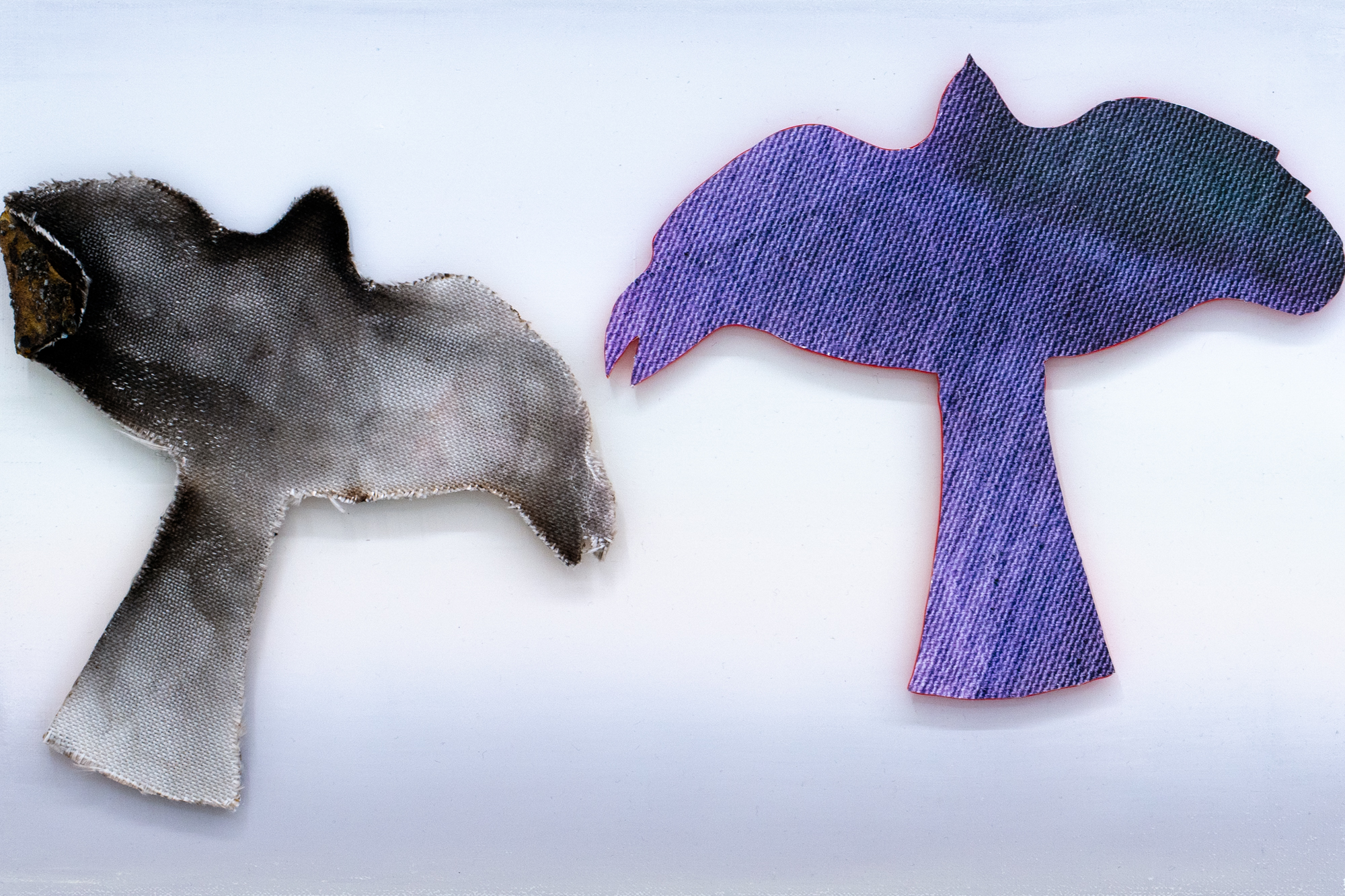daylight


Full text further below.
Photo: Ruslan stark




”Within the frame of paining” is the result of a long process. I found myself by working on a personal figurative framework where the very painting itself consisted of pigment mixed with polyester and fiber mesh. I presented the work as painting, but the formulation prompted certain objections. As an answer I made a new one, but this time; just the frame on which I stretched cotton canvas that I had made a print on - and no one could see the frame, just the same as I can’t see someone’s spine. Again, a new one was made, It stands here, leaning against my work table.
”Relation drama” which emerged during the installation of the exhibition. I wanted to highlight the phenomenon of projections from a psychological perspective, especially in relation to how we are affected by others’ perceptions of us. I did not want the work to be read as an illustration. As Edit assisted me during the installation, we discussed different perspectives on projections; she brought up reflections, which led to a conversation about mirror neurons as receivers of the projections. I no longer recall how the prism entered the process. I lost my grasp of the initial idea at the same moment the work began to take shape on its own: it no longer felt like an illustration.
On the table stands ”Book spine”, a totem; a sculpture that serves a rather practical function. Placed at my altar where I commute with higher powers. It consists of objects with sentimental value, collected over time. For example: A fragment of the last coffee cup from my grandmother, a keychain from India with the Om-symbol. A cross from Taizé, a pipe steam with an Islamic crescent, a plexi sample from Copenhagen reminiscent of Malevich’s ”Black square”, among others. All these elements are braided together and suspended from a microphone stand, with an active microphone connected to wireless speakers that generate feedback and delay.
”Prosper”. I was in Spain, sitting on a balcony, intending to paint the sunset. The light faded faster than I had anticipated, and soon I found myself painting in near darkness. I had managed to mix the hues of the sunset in ”broad strokes” in piles on the canvas. I applied the color quick and forcefully with a heavy spatula, repeating the motion thirty-forty times til the colors merged into one another. I find the shifts in color fascinating, as the variations in the sun’s rays reveal something about the distance to the sun.
The two small birds, affixed with magnets to the painting were originally two separate works that came together. One of the birds carries a fire blanket that had been thrown onto a fire. Observers have commented on the recurring bird motif, though no such theme was ever intended. The silhouettes have persisted for a long time, always perceived as a painterly framework rather than as representations of birds. It has always been more about the history of painting itself.
As I write about this, I read about new violations of airspace by Russian fighter jets "SU-27". Why do I have the need to document it? Maybe because it all started there - with the innate human need to document - starting with cave painting and the purpose it served. I am having my first child in 11 days.
When Kiev was painted, it began with an image found online—an image of a bombed façade in Ukraine. When the depiction proved unsatisfactory, the painting was drowned in solvent, the surface covered with newspaper. Upon pulling the paper away, flames emerged across the image. The effect was almost eerie.
I want to document our days and events through an embodied form of thinking . It’s like going to a casino, except the stakes are material and time. I often sit down with a desire to reason, only to realise that this is not the place for it.